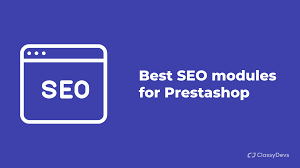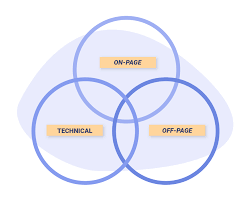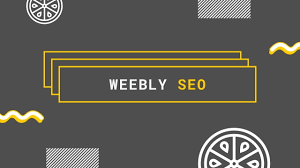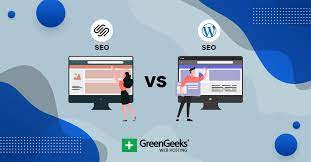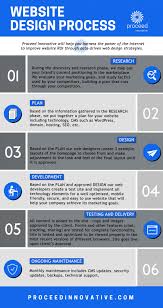Mastering PrestaShop SEO Strategies for E-commerce Success
The Ultimate Guide to SEO for PrestaShop
In the competitive world of e-commerce, having a strong online presence is crucial for success. If you’re running a PrestaShop website, you have a powerful platform at your disposal. However, to truly stand out and attract more customers, you need to harness the power of SEO.
What is SEO for PrestaShop?
SEO (Search Engine Optimization) for PrestaShop involves implementing strategies to improve your website’s visibility in search engine results pages. By optimising your PrestaShop site for search engines, you can increase organic traffic, improve rankings, and ultimately drive more sales.
Key SEO Strategies for PrestaShop
Optimise Your Product Pages: Ensure that each product page on your PrestaShop website is optimised with relevant keywords, high-quality images, and detailed descriptions.
Create Unique Meta Titles and Descriptions: Craft compelling meta titles and descriptions for each page on your site to improve click-through rates and search engine visibility.
Improve Site Speed: Optimise your PrestaShop website for speed to provide a better user experience and boost your search engine rankings.
Benefits of SEO for PrestaShop
– Increased Visibility: By implementing SEO best practices, your PrestaShop website can rank higher in search results, making it easier for potential customers to find you.
– Enhanced User Experience: SEO techniques such as improving site speed and mobile responsiveness can enhance the overall user experience on your PrestaShop site.
– Higher Conversion Rates: With improved visibility and user experience, you are likely to see an increase in conversion rates as more visitors are attracted to your site.
Get Started with SEO for Your PrestaShop Website
If you’re ready to take your PrestaShop website to the next level, investing in SEO is a smart move. Whether you choose to handle it yourself or enlist the help of professionals, implementing effective SEO strategies can significantly impact the success of your e-commerce business.
Top 8 SEO Tips for Enhancing Your PrestaShop Store’s Online Visibility
- Optimize product titles and descriptions with relevant keywords
- Create SEO-friendly URLs for your PrestaShop store
- Optimize images by using descriptive filenames and alt text
- Improve site speed for better user experience and search engine ranking
- Generate XML sitemaps to help search engines crawl and index your site
- Utilize meta tags effectively, including meta titles and descriptions
- Implement structured data markup to enhance search results appearance
- Regularly monitor and analyse your SEO performance using tools like Google Analytics
Optimize product titles and descriptions with relevant keywords
To enhance the visibility and search engine ranking of your PrestaShop website, it is essential to optimise product titles and descriptions with relevant keywords. By incorporating targeted keywords that align with what potential customers are searching for, you can attract more organic traffic to your site. Crafting compelling and informative product titles and descriptions not only improves your SEO performance but also enhances the user experience, helping visitors find the products they are looking for quickly and easily. This simple yet effective tip can make a significant difference in driving traffic and boosting sales for your PrestaShop e-commerce store.
Create SEO-friendly URLs for your PrestaShop store
Creating SEO-friendly URLs for your PrestaShop store is a crucial step in optimising your website for search engines. By incorporating relevant keywords and descriptive phrases into your URLs, you can improve the visibility of your online store in search engine results. SEO-friendly URLs not only make it easier for search engines to understand the content of your pages but also enhance the user experience by providing clear and informative links. This simple yet effective technique can have a significant impact on your PrestaShop store’s search engine rankings and ultimately drive more organic traffic to your site.
Optimize images by using descriptive filenames and alt text
When it comes to enhancing the SEO performance of your PrestaShop website, a valuable tip is to optimise images by utilising descriptive filenames and alt text. By naming images with relevant keywords and providing detailed alt text descriptions, you not only improve the accessibility of your site for visually impaired users but also provide search engines with valuable information about the content of your images. This simple yet effective practice can boost your website’s visibility in search results and contribute to a better overall user experience.
Improve site speed for better user experience and search engine ranking
Improving the site speed of your PrestaShop website is a crucial tip for enhancing both user experience and search engine ranking. A fast-loading website not only provides visitors with a seamless browsing experience but also signals to search engines that your site is reliable and user-friendly. By optimising your site speed, you can reduce bounce rates, increase engagement, and ultimately improve your chances of ranking higher in search results. Prioritising site speed is a simple yet effective way to boost both user satisfaction and SEO performance for your PrestaShop online store.
Generate XML sitemaps to help search engines crawl and index your site
Generating XML sitemaps is a crucial tip for enhancing the SEO of your PrestaShop website. By creating these sitemaps, you provide search engines with a roadmap to efficiently crawl and index all the pages on your site. This not only helps search engines discover your content more easily but also ensures that all your important pages are properly indexed, ultimately improving your site’s visibility and ranking in search engine results.
Utilize meta tags effectively, including meta titles and descriptions
Effective utilisation of meta tags, such as meta titles and descriptions, is a crucial aspect of SEO for PrestaShop websites. By crafting compelling and relevant meta titles and descriptions, businesses can improve their click-through rates in search engine results pages, thereby enhancing their visibility and attracting more potential customers. These meta tags not only communicate the content of the page to search engines but also serve as a powerful tool to entice users to click on your website, making them an essential component of any successful SEO strategy for PrestaShop.
Implement structured data markup to enhance search results appearance
By implementing structured data markup on your PrestaShop website, you can enhance the appearance of your search results in a significant way. Structured data helps search engines better understand the content on your site, allowing them to display rich snippets that provide users with more information directly in the search results. This not only improves the visibility of your website but also increases the likelihood of attracting clicks from users who are looking for specific products or information. Integrating structured data markup is a powerful SEO strategy that can give your PrestaShop site a competitive edge in search engine rankings.
Regularly monitor and analyse your SEO performance using tools like Google Analytics
Regularly monitoring and analysing your SEO performance using tools like Google Analytics is essential for the success of your PrestaShop website. By tracking key metrics such as organic traffic, keyword rankings, and user behaviour, you can gain valuable insights into the effectiveness of your SEO strategies. This data allows you to identify areas for improvement, measure the impact of your efforts, and make informed decisions to enhance your website’s visibility and performance in search engine results.
